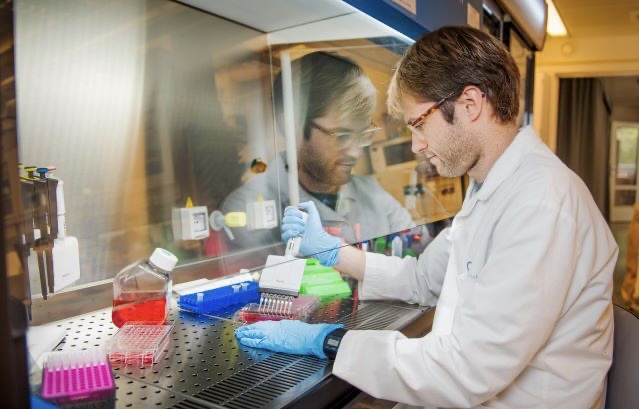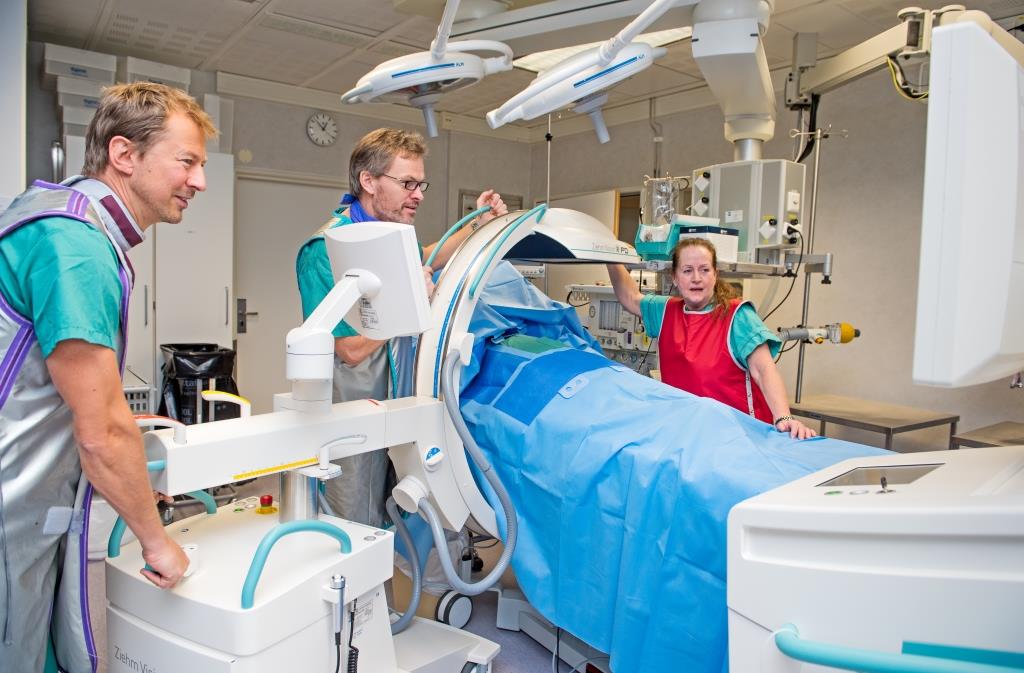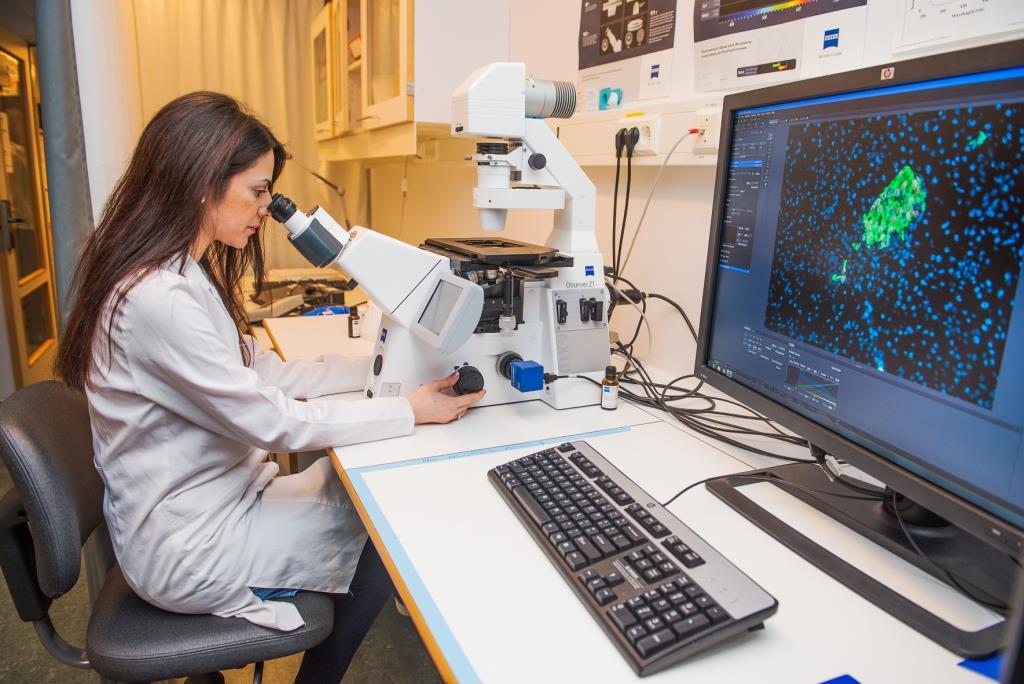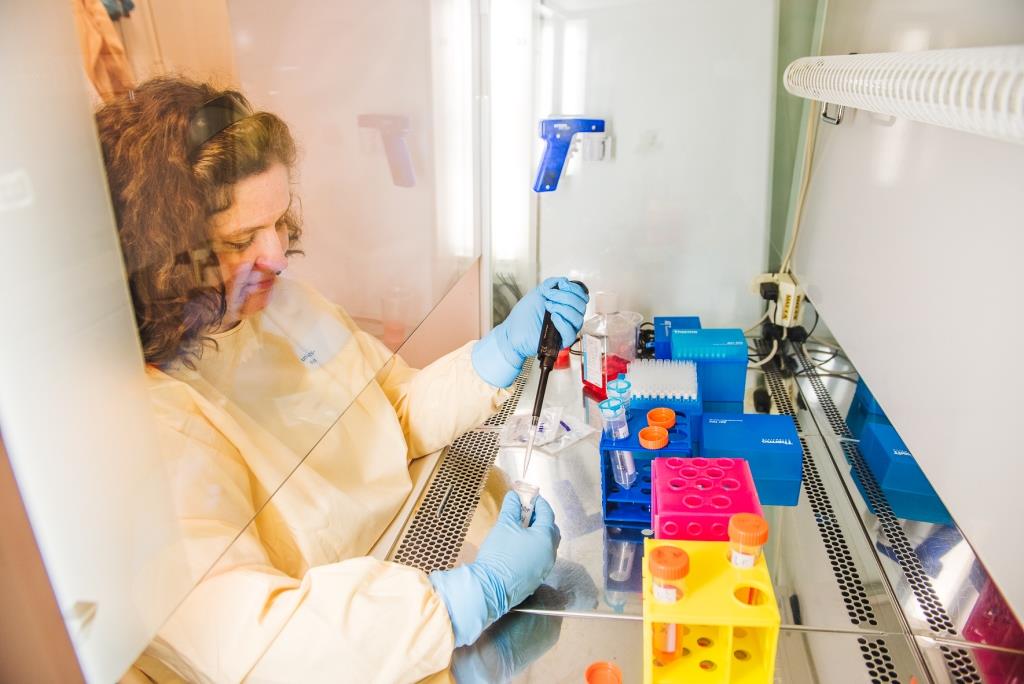Groups
|
Molecular Cardiology The research spans from biochemical structure-activity studies of target proteins, cell biologic studies, to experimental studies in appropriate disease models in genetically engineered mice. Several ongoing studies focus on CCN proteins, a family of matricellular proteins/growth factors that has been shown to be involved in tissue repair mechanisms and fibrosis. We have recently uncovered that these proteins are secreted as preproproteins that requires proteolytic processing following secretion from cells in order to become biologically active |

|
|
Integrated Cardiovascular Function The Integrated Cardiovascular Function Group studies cardiac mechanics in experimental models and in patients. The general objective is to gain new insights into mechanisms of cardiovascular disease and to develop new imaging modalities which quantify disease processes and cardiac function. The idea is to develop better diagnostic understanding and solutions and to translate these into improved clinical practice. |

|
|
Experimental Cell Transplantation Group leader: Senior Scientist Hanne Scholz Type 1 diabetes (T1D) is an autoimmune disease caused by destruction of the alpha- and beta cells in the pancreas. In spite of optimal insulin therapy periods of hyperglycemia induce serious vascular- and neurological complications that need addressing. The research group has a clear translational approach with projects ranging from clinical trials and outcome studies, experimental islets biology and cell transplant studies to advanced in vitro studies. |

|
|
Vilhelm Magnus Laboratory for Neurosurgical Research Group leader: Professor Einar Osland Vik-Mo The Vilhelm Magnus Laboratory (VML) is a translational research group for neurosurgery at Oslo University Hospital. We explore the biology underlying neurosurgical conditions and our research efforts encompass both normal and cancer cells from the human brain. It is thought that stem cells in glioblastoma are critically important in resistance to therapy. Therefore, there is a strong rationale to target these cells in order to develop new molecular therapies. The group has already identified differentially expressed cell properties including genes and signaling proteins that may have potential as new and specific targets for treatment of glioblastoma. |

|
 |
|||
|
Molecular Cardiology Our research group is a multidisciplinary team of experts in gene technology, molecular and cellular biology, as well as experimental and clinical medicine. A major goal of our research group is to dissect the function of myocardial autocrine/paracrine factors, their cognate receptors, and intracellular pathways in cardiac myocytes and fibroblasts. Of particular interest is also the cross-talk and intracellular signaling between cardiac fibroblasts and cardiac myocytes. New knowledge on the function and mechanisms of signaling pathways in the heart may provide basis for development of new and more effective therapeutic intervention in acute coronary syndromes and heart failure. The research efforts comprise studies of isolated cardiac myocytes and fibroblasts, integrated physiology in genetically engineered mice, large animal studies, as well as clinical investigations. |
|
||
|
Integrated Cardiovascular Function The general objective is to gain new insights into mechanisms of cardiovascular disease and to develop new imaging modalities which quantify disease processes and cardiac function. The research activities investigate mechanisms of left ventricular (LV) dyssynchrony and development of better methods for selecting patients for CRT, and mechanisms of LV diastolic dysfunction to develop better diagnostic methods of diastolic heart failure. |
|||
|
Experimental Cell Transplantation Group leader: senior scientist Hanne Scholz Type 1 diabetes (T1D) is an autoimmune disease caused by destruction of the alpha- and beta cells in the pancreas. In spite of optimal insulin therapy periods of hyperglycemia induce serious vascular- and neurological complications that need addressing. The research group has a clear translational approach with projects ranging from clinical trials and outcome studies, experimental islets biology and cell transplant studies to advanced in vitro studies. |
|
||
|
Vilhelm Magnus Laboratory for Neurosurgical Research Group leader: professor Iver A. Langmoen The Vilhelm Magnus Laboratory (VML) is a translational research group for neurosurgery at Oslo University Hospital. We explore the biology underlying neurosurgical conditions and our research efforts encompass both normal and cancer cells from the human brain. It is thought that stem cells in glioblastoma are critically important in resistance to therapy. Therefore, there is a strong rationale to target these cells in order to develop new molecular therapies. The group has already identified differentially expressed cell properties including genes and signaling proteins that may have potential as new and specific targets for treatment of glioblastoma. |
|||
|
Experimental Orthopaedic Research Group leader: professor Lars Nordsletten Musculoskeletal injuries are a main cause of disability worldwide affecting people of all ages. The Experimental Orthopedic Research (EOR) group applies experimental methods on different aspects of orthopedics. These include research on biopsies, joint fluid, bones and cell culture studies. Mechanical testing of structures has been one of the main research methods. The experimental work in the laboratory is closely connected to ongoing or planned clinical studies, aiming to improve orthopedic patient care. |
